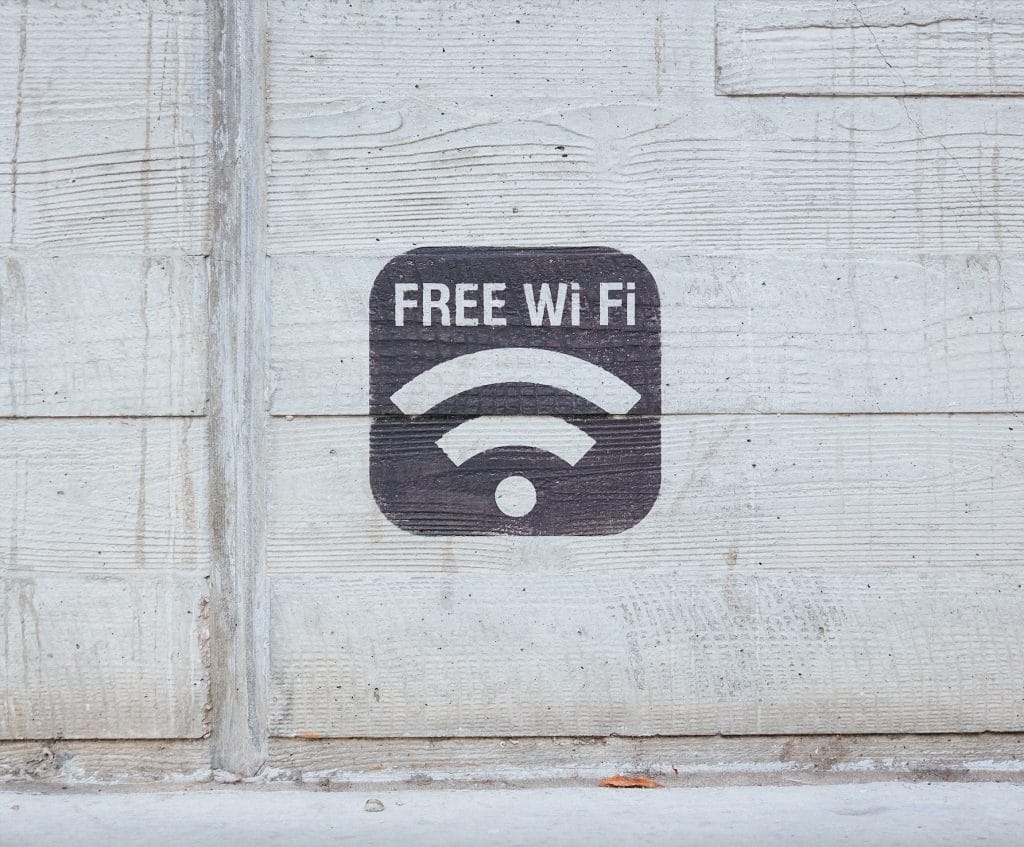Wi-fi Marketing – How providing free Wi-fi can boost in-store analytics

Offering free Wi-fi to customers in store has become a standard practice. Complimentary Wi-fi is often anticipated by customers these days, and very much appreciated when they visit you on site. But did you know that offering this free Wi-fi doesn’t just benefit your customers, but also presents you with opportunities to enhance sales and endorse your brand?
Studies have found many correlations between complimentary Wi-fi and sales data, such as diners being happier to eat alone in a restaurant if there is free Wi-fi, and that when free Wi-fi is present higher sales numbers are reported by retailers.
There is also an abundance of in-store sales analytics that providing free Wi-fi allows you to utilise to enrich your operations.
Widespread metrics frequently used by companies seizing the opportunities that offering complimentary Wi-fi grant are outlined below.
1. Foot Traffic
Not everyone entering your store will make a purchase. Some may just browse; some may combine purchases within their group. In-store Wi-fi allows you to track the number of people walking through your door, and the number who buy from you.
This metric encompasses the opportunity to track the average number of visitors to your store each day through your Wi-fi Marketing.
2. New VS Returning Customers
Following the data of how many customers you get entering your store is digging deeper into which customers are loyal, and how many are new to your business.
Loyal customers are the foundations of a business. Out of loyal customers, 60% will go out of their way to buy from your brand, 60% will shop at your business more often, and 50% will buy more of your products. The new customers that walk into your store will become extremely valuable if you can retain them and turn them into loyal customers.
Ascertaining which foot traffic belongs to new customers or returning customers will allow you to switch up marketing depending on their familiarity. For example, welcoming existing customers back or presenting coupons for new customers visiting you for the first time. Wi-fi marketing presents you with these in-store analytics.
3. Demographics
Differing marketing messages is a great way to personalise a customer’s experience with your brand. Through Wi-fi analytics you can also establish a customer’s gender, age, and interests, which allows you to personalise marketing even further and even cater your store to your target audiences.
Your Wi-fi system can connect to Facebook or Twitter to collect demographic data on your in-store shoppers. This permits you to learn how your customers respond to particular items or deals and what they do or don’t like.
Data of this nature is extremely powerful in terms of in-store marketing. With this information you can discover who your primary demographic is, and from this develop overhead music that appeals to them, or popular menu items according to the demographic as a few examples. This creates an emotional connection with your brand increasing their likelihood of making a purchase.
4. Customer Communication
When customers use your complimentary Wi-fi you control what landing pages they see, which offers they can view, and what they can redeem. This means you can track the effectiveness of your campaigns before you run them on social media or other mass audiences.
You could, for example, A/B test certain promotions or campaigns to determine which are responded to more. This could save you money in the long run.
5. Engagement
You can use your free Wi-fi to connect with your customers on social media. Through presenting a call-to-action prompting them to follow you or instigate a check-in for a special discount.
This is a step in converting new customers into loyal purchasers. When an individual follows you on social media they are committing to your brand. From there, incredible social media content needs to be created to remind them of your brand and entice them back.
6. ROI’s
Financial data from the business management side of your operations is generally plentiful, including transaction numbers, sold inventory, popular items etc.
Wi-fi marketing analytics create clearer conversion tracking and insights into who is buying what. Some general metrics include:
Conversion Rate: percentage of people who make a purchase when walking into your business
Redemption Rate: percentage of people who use coupons or promotions
New vs Returning Customer Spend: new customer spend vs loyal customer purchases
ROI for Marketing Efforts: average percent increase in traffic as a result of campaigns
Cost per Acquisition: amount you as a business needs to spend to acquire a new customer or additional foot traffic
Through using in-store analytics you can define which store promotions were successful, providing insight and control over your marketing efforts
7. Busiest Hours In-Store
This metric presents insights into store operations. Through understanding which times of day are popular or quieter on average, you can schedule staff accordingly.
This will ensure a better experience for your customers, who will enjoy your services more and appreciate assistance afforded to them due to the correct number of team members present.
Because of the traditional way analytics within a business is measured, too many businesses find themselves relying on intuition and guesswork to run their organisations. Bias can leak in, and their assumptions are made on what they think they see or what they want to see in their stores. However, objective data cannot be replaced or overvalued.
Why wouldn’t you use a promotion strategy that allows so many insights in such a simple manner?
If you are looking to collect in-store data or are wondering if this promotion strategy could benefit you, contact Mata Digital for assistance. Learn about your customers through in-store marketing, and better engage your customers.
